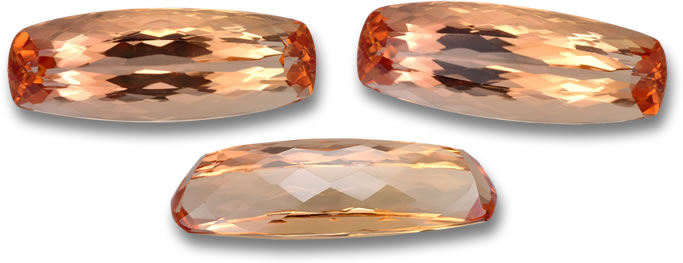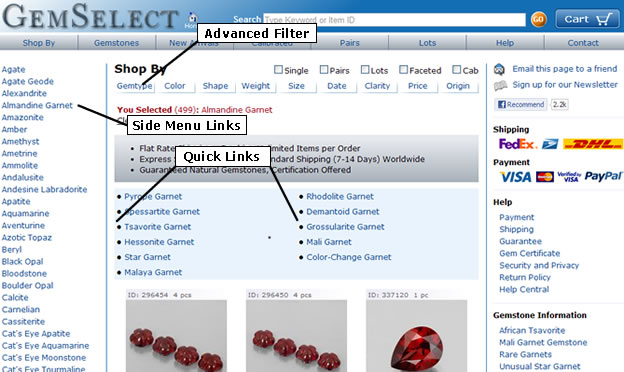|
|
Your Details
|
|
Your Details
April 2013 Newsletter: East Meets West & Elemental GemstonesEastern Elements
In ancient Chinese culture, the universe was divided into five elements. Each of the 5 elements encompassed its own unique energies that were capable of shaping the lives, events and processes for all things. The concept of the 5 elements incorporates the Chinese philosophy known as ‘qi’ or ‘chi’, but qi is limited to the energy of living things, whereas the elements of water, fire, wood, metal and earth can shape the both the living and the nonliving by way of elemental energy. They not only control the forces within the human body, but the entirety of the universe. The Chinese believed in feng shui, which is an ancient method of balancing the natural world to create peace, harmony and prosperity. The balancing of the natural world requires the balancing of the 5 elements. The methodology of feng shui is also seen in the philosophy of yin and yang, but yin and yang focus primarily on opposite forces (elements), transcending one another to create a perpetual balance - hot and cold, fire and water, or man and woman for example. Feng shui does not always use opposite elements of energy to bestow balance, as yin and yang do. Feng shui incorporates colors representing each of the 5 elements, for example, fire can be represented by red, yellow, orange, pink and purple objects (such as gemstones). Therefore, items of these colors are used together and placed in specific areas of one’s life in what is referred to as a ‘productive rotating cycle’. The ‘productive rotating cycle’, refers to the sequential ordering of the elements, almost as if the elements are flowing clockwise in nature - wood nurtures fire; fire nurtures earth; earth nurtures metal; metal nurtures water and water nurtures wood. To this day, the practice of feng shui is still very active and it is not only practiced in Chinese households, but throughout countless homes across the world. Eastern Elemental Gemstones
Western Elements
In many Western cultures, there are practitioners of a very similar concept to feng shui. Some call it astrology, but in truth, it is more than just astrology. The esotericism of Western culture means that it has a very broad spectrum, but just like the East, it focuses on the balancing of forces, as well as spirituality and one’s well-being (making it similar to Chinese feng shui philosophy). Perhaps the ancient Chinese beliefs played a role in the formation of Western tradition. One thing we know is that the East and the West are yin and yang. They are opposite forces like transparent and opaque, but together they create balance. Western tradition holds that all things in the universe can be divided into four elements: Fire, earth, water and wind. Each of the 4 elements encompasses an energy capable of shaping the universe, and just as the East has a productive cycle for balancing the elements, so does the West (fire and air; earth and water). In astrology, each of the 12 zodiac signs is assigned one of the 4 elements, and just as in the East, each of the elements also has its own corresponding colors. For example, fire is represented by red, yellow and orange colors, while earth is represented by green, black, brown and grey objects (such as gemstones). If the energies of the universe flow well in your life and within your home, you will feel tranquility and balance in life. Western Elemental Gemstones
Gemstones for Life
Whether you come from the East or the West, and no matter which tradition you follow, it is enticingly captivating to learn about other cultures and traditional practices. In the gemstone and jewelry industry, these beliefs and traditions are a core aspect of our thriving industry and we witness this everyday in the colored gem trade through the trading of birthstones, healing stones and jewelry designs that encompass feng shui or other astrological elements. Natural gems can occur in all of the elemental colors relating to both East and West, which makes them the perfect addition to your home or collection. Industry News
Red Tourmaline Addition for the Smithsonian: A 14.24 carat red tourmaline from Nigeria will now permanently reside within the Smithsonian Museum of Washington. The stone was presented to the curator of the Smithsonian National Gem and Mineral Collection at the 2013 AGTA Gem Fair in Tucson, Arizona. The Smithsonian collection is one of the largest collections in the world, boasting over 350,000 minerals specimens and over 10,000 gems! Silver Jewelry Sales on the Rise: Silver has always been a popular choice for jewelers and designers, but the trends this year and last are heading toward an incredible incline. The lower costs compared to gold are attracting more and more buyers every day. In fact, it was reported that Tiffany and Co.’s CEO was not pleased with 2012 sales, which were greatly affected by the demand for lower priced silver jewelry. Colored gemstones are ideal for silver settings. Rare and Unusual Gems
This month, GemSelect is pleased to showcase one of our rarer gemstones: A rare 7.13 carat imperial topaz from Brazil. 
7.13ct Natural Imperial Topaz
Imperial topaz is not only an elemental gemstone representing fire in both Eastern and Western spiritual beliefs, but it also happens to be the most valuable of all topaz varieties. Imperial topaz is typically never treated, and like all topaz, it has excellent hardness and durability making it one of the finest gems available. Customer Questions
Every month we answer questions of general interest from our customers. Please feel free to send your questions or suggestions to our support team at help@gemselect.com! Question
I am looking for yellow sapphire of 3.5 ratti. What carat weight is ratti?
Answer
Pukhraj is the Hindi name for yellow sapphire. The weights for pukhraj gems are referenced as ‘ratti’. Ratti weight can easily be converted to carat weight by taking the weight in ratti and multiplying by 0.91 for total carat weight conversion (1 ratti = .91 carats).
Question

Almandine Garnet Page
Answer
We have all the different types of garnet listed individually by variety on the side menu where you will find links to all of our other gem types. Additionally, we have advanced search features on our website, where you filter your selections by gem type. Also, we have ‘quick links’ on our garnet gemstone product pages too. See the image below to see where these quick links are located.
Keep up with our new arrivals before they hit the newsletter by joining our thousands of fans and followers on our social networking pages. We love interacting with our customers - you can visit us on Tumblr, LinkedIn, Twitter, Facebook or Pinterest! To ensure you can receive our emails, please be sure to add help@gemselect.com to your list of safe contacts, or you add us into your email address book! Please feel free to contact us with any questions, comments and queries! We respond to each and every email we receive. Happy Gem Hunting! |
